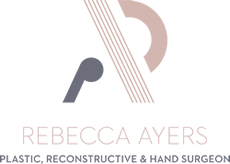Prominent Ear Correction (Otoplasty)
Prominent Ear Correction - Information sheet
2015 PDF 125 KB
What is involved in a Prominent Ear Correction (Otoplasty)?
Ears appear prominent due to a lack of folding of the (anti-helix) ear cartilage, a very deep conchal bowl or a combination of these features. Further contributing features include positional plagiocephaly (a deformity where one side of the skull is flattened), prominent ear lobes or a prominent mastoid process (the skull bone behind the ear).

Children with prominent ears frequently get teased by their peers, beginning as early as 6 to 7 years of age. Some children are not concerned about their ears and tolerate teasing well, while others find the teasing distressing and become self-conscious.
When your child is about 5 years of age, I can undertake prominent ear correction. By this age, your child’s ears are approaching adult size, and the cartilage is gradually becoming firmer. Your child is also mature enough to contribute to the decision-making process and cooperate with post-surgical aftercare. If your child is very anxious about the idea of surgery, it may be best to delay the surgery for a year or two until your child actively requests the procedure.
What is the technique for correcting prominent ears?
Prominent ear correction surgery is suitable for adults as well as children from about 5 years and over. During the surgery, I remove a small section of skin from behind the ear and then I use sutures to re-create the special folds of the ear, and to tuck the ear neatly against the scalp. All sutures I use are dissolving. The result should look natural and pleasing. There will be a scar behind the ear, and this may be visible in people with very short hair.
After Surgery
Dressings will be applied after your prominent ear correction surgery, and are left on for a week. You should keep the dressings dry and clean during this time. When the dressing is removed, I recommend a soft wide elastic headband be worn for 2 weeks day and night, and then for 3 months at night.
Quiet activities are recommended. Please avoid contact sport for 3 months. It is probably best to keep your child away from school for the first week or so.
The affected area will be tender after the surgery, and discomfort will resolve gradually. However significant pain on one side of the head may indicate an infection or bleeding. If you suspect an infection or bleeding, please get in touch with me right away to get your wounds reviewed.
Post-operative swelling may take 3 months or more to set.
Possible Complications after Prominent Ear Correction
Infection
Parts of the ear may become infected, including chondritis (infection of the cartilage and loss of the cartilage). Chondritis occurs in about 1% of cases.
Bleeding
Excessive pain soon after surgery may suggest a haematoma (collection of blood) that may need review or a return to theatre. About 1% of patients experience post-surgical haematoma.
Skin necrosis
An erosion of the skin. This usually settles with dressings.
Asymmetry
Complete symmetry is not possible but I will do my very best to make both ears as similar as possible.
Recurrence
Prominent ears may develop again. This occurs in about 7-10% of cases and may require revision surgery.
Scarring
This includes prominent scarring such as hypertrophic (raised) scarring or keloid scarring (hard growth on the scar).
Suture prominence or granuloma
An obvious wound relating to suture material and requiring a small procedure to remove the suture material.
